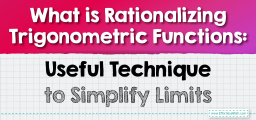How to Find Vague Limits by Change of Function’s Value
Understanding vague limits through the change of a function’s value is a subtle, yet powerful technique. It’s an exploration into the heart of what a function reveals at the point where clarity fades into ambiguity. Let’s navigate through this process step by step:
[include_netrun_products_block from-products="product/6-south-carolina-sc-ready-grade-3-math-practice-tests/" product-list-class="bundle-products float-left" product-item-class="float-left" product-item-image-container-class="p-0 float-left" product-item-image-container-size="col-2" product-item-image-container-custom-style="" product-item-container-size="" product-item-add-to-cart-class="btn-accent btn-purchase-ajax" product-item-button-custom-url="{url}/?ajax-add-to-cart={id}" product-item-button-custom-url-if-not-salable="{productUrl} product-item-container-class="" product-item-element-order="image,title,purchase,price" product-item-title-size="" product-item-title-wrapper-size="col-10" product-item-title-tag="h3" product-item-title-class="mt-0" product-item-title-wrapper-class="float-left pr-0" product-item-price-size="" product-item-purchase-size="" product-item-purchase-wrapper-size="" product-item-price-wrapper-class="pr-0 float-left" product-item-price-wrapper-size="col-10" product-item-read-more-text="" product-item-add-to-cart-text="" product-item-add-to-cart-custom-attribute="title='Purchase this book with single click'" product-item-thumbnail-size="290-380" show-details="false" show-excerpt="false" paginate="false" lazy-load="true"]

Step-by-step Guide to Find Vague Limits by Change of Function’s Value
Here is a step-by-step guide to finding vague limits by changing the function’s value:
Step 1: Recognizing the Vagueness
Identifying the Ambiguity
- Locate the Limit: Begin by identifying the limit that needs to be evaluated. For example, let’s consider the limit of a function \(f(x)\) as \(x\) approaches some value ‘\(a\)’.
- Spot the Indeterminacy: Recognize that direct substitution leads to an indeterminate form or does not readily yield the limit value. This is the vagueness we aim to resolve.
Step 2: Preparing for Transformation
Strategizing the Approach
- Understand the Context: Scrutinize the function for any inherent properties that might not be evident initially. Are there trigonometric, logarithmic, or exponential characteristics that can be exploited?
- Conceptualize the Change: Determine a potential substitution or transformation that will simplify the evaluation of the limit. This might involve an algebraic manipulation, a trigonometric identity, or an entirely new function that approximates the original function near the point ‘\(a\)’.
Step 3: Executing the Change of Function
The Act of Substitution
- Initiate the Change: Carry out the substitution. For example, if you have a trigonometric function involving \(sin(x)\) and \(cos(x)\), you might use the identity \(sin^2(x)+cos^2(x)=1\) to simplify.
- The Algebraic Shift: If your function involves algebraic expressions, consider substituting with a simpler expression. For example, if \(f(x)=\frac{(x^2−1)}{(x−1)}\), change the function to \(f(x)=x+1\) by factoring and canceling the common term.
Step 4: Evaluating the New Function
Navigating Towards Clarity
- Assess the New Function: After the substitution, look at the new function. Does it remove the vagueness? Can the limit now be evaluated by direct substitution?
- Calculating the Limit: If a direct substitution is now possible, calculate the limit of the new function as \(x\) approaches ‘\(a\)’. This is the step where the fog of ambiguity begins to clear.
Step 5: Confirming the Legitimacy
Validation of Transformation
- Check the Continuity: Ensure that the change of function is valid in the neighborhood around ‘\(a\)’. The new function should closely track the original function’s behavior as it approaches the limit.
- Legitimacy in Transformation: The transformation must be legitimate; it should not introduce new behavior that wasn’t present in the original function as it approaches ‘\(a\)’.
Step 6: Interpreting the Result
Understanding the Outcome
- Decipher the Limit: Interpret the limit’s result in the context of the original problem. Has the vague limit been resolved?
- Examine Consistency: Check for consistency across the domain of the function, ensuring that the limit aligns with the overall behavior of the function.
Step 7: Generalizing the Insight
Applying the Knowledge
- General Application: Consider how the strategy used can be applied to other similar functions with vague limits.
- Broaden Understanding: Use the resolved limit to deepen your understanding of the function’s behavior in its domain.
By following these steps, you can systematically address vague limits through the change of a function’s value. This approach is not just a mechanical process but a conceptual journey. It requires ingenuity, a deep understanding of the function’s nature, and the application of mathematical intuition to bring to light the values that remain hidden in the shadows of vagueness.
Related to This Article
More math articles
- FREE 3rd Grade NYSE Math Practice Test
- Hоw to Gеt a Great Sсоrе оn thе SAT Math Test
- Complete Guide to Biconditionals: Definitions and Usage
- The Ultimate 7th Grade DCAS Math Course (+FREE Worksheets)
- The Ultimate SSAT Middle-Level Math Course (+FREE Worksheets & Tests)
- Areas Formed by Function Contours
- Top 10 Free Websites for TASC Math Preparation
- How to Solve Linear Equations in Two Variables?
- How to Solve Logarithmic Equations? (+FREE Worksheet!)
- Differentiability: Everything You Need To Know



























What people say about "How to Find Vague Limits by Change of Function’s Value - Effortless Math: We Help Students Learn to LOVE Mathematics"?
No one replied yet.